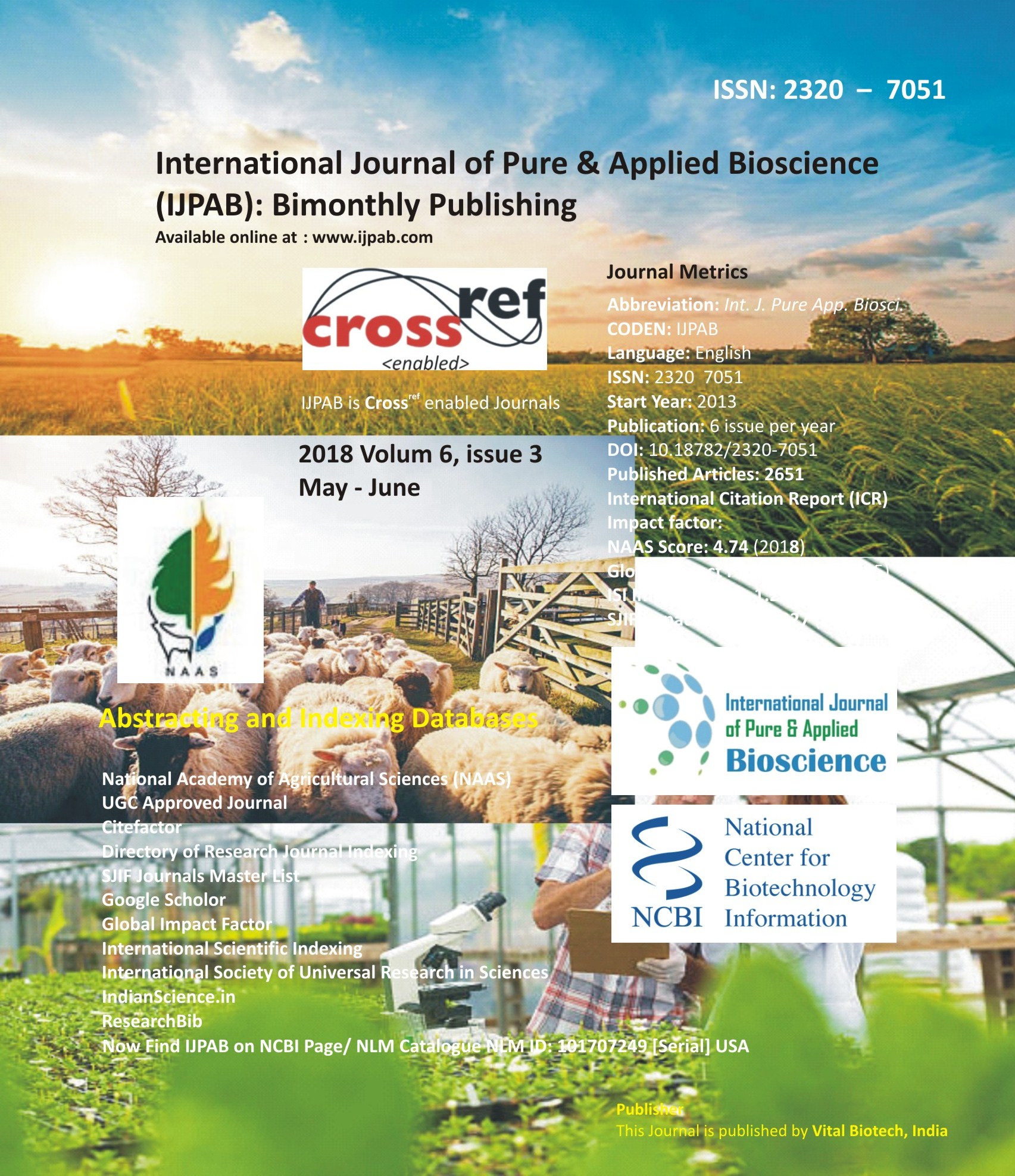
-
No. 772, Basant Vihar, Kota
Rajasthan-324009 India
-
Call Us On
+91 9784677044
-
Mail Us @
editor@ijpab.com
International Journal of Pure & Applied Bioscience (IJPAB)
Year : 2018, Volume : 6, Issue : 3
First page : (137) Last page : (145)
Article doi: : http://dx.doi.org/10.18782/2320-7051.6644
Characterization, Structural Modeling and Docking Study of CnCNLR1, A CC-NBS-LRR Protein from Coconut
Rachana K. E., Gangaraj K. P. and Rajesh M. K.*
ICAR-Central Plantation Crops Research Institute, Kasaragod 671124, Kerala, India
*Corresponding Author E-mail: rajesh.mk@icar.gov.in
Received: 22.05.2018 | Revised: 19.06.2018 | Accepted: 26.06.2018
ABSTRACT
Coconut, a versatile crop of the family Arecaceae, is highly susceptible to bacterial and fungal pathogens. The identification of resistance gene analogues (RGAs) holds great promise for development of disease resistant coconut cultivars. Plant NBS-LRR genes, a class of RGAs, trigger multifaceted defense responses by recognizing several conserved microbial/pathogen associated molecular patterns. In our previous studies, different classes of RGAs were identified from coconut root (wilt) resistant leaf transcriptome and also by comparative genomics approach. CnCNLR1, a coiled-coil nucleotide-binding-site-leucine-rich-repeat (CC-NBS-LRR) R-gene, was found up-regulated in healthy palms in comparison to root (wilt) disease affected palms. In the present study, we have predicted the primary, secondary and 3D (three dimensional) structure of CnCNLR1 based on threading. In addition, docking interaction of CnCNLR1 with the ligand β-(1, 3)-D-glucan was also predicted. These predictions suggested that two amino acid residues viz.; Tyr250 and Gly247 act as catalytic residues and are involved in hydrogen bonding with the ligand. Elucidation of the molecular structure will help to provide a deeper understanding of the structural basis of ligand binding to CnCNLR1 protein, thus paving ways for development of novel strategies for disease control in coconut palm.
Key words: Coconut, Disease resistance, CC-NBS-LRR, β-(1,3)-D-glucan, Threading, Docking
Full Text : PDF; Journal doi : http://dx.doi.org/10.18782
Cite this article: Rachana, K.E., Gangaraj, K.P. and Rajesh, M.K., Characterization, structural modeling and docking study of CnCNLR1, a CC-NBS-LRR protein from coconut, Int. J. Pure App. Biosci.6(3): 137-145 (2018). doi: http://dx.doi.org/10.18782/2320-7051.6644

